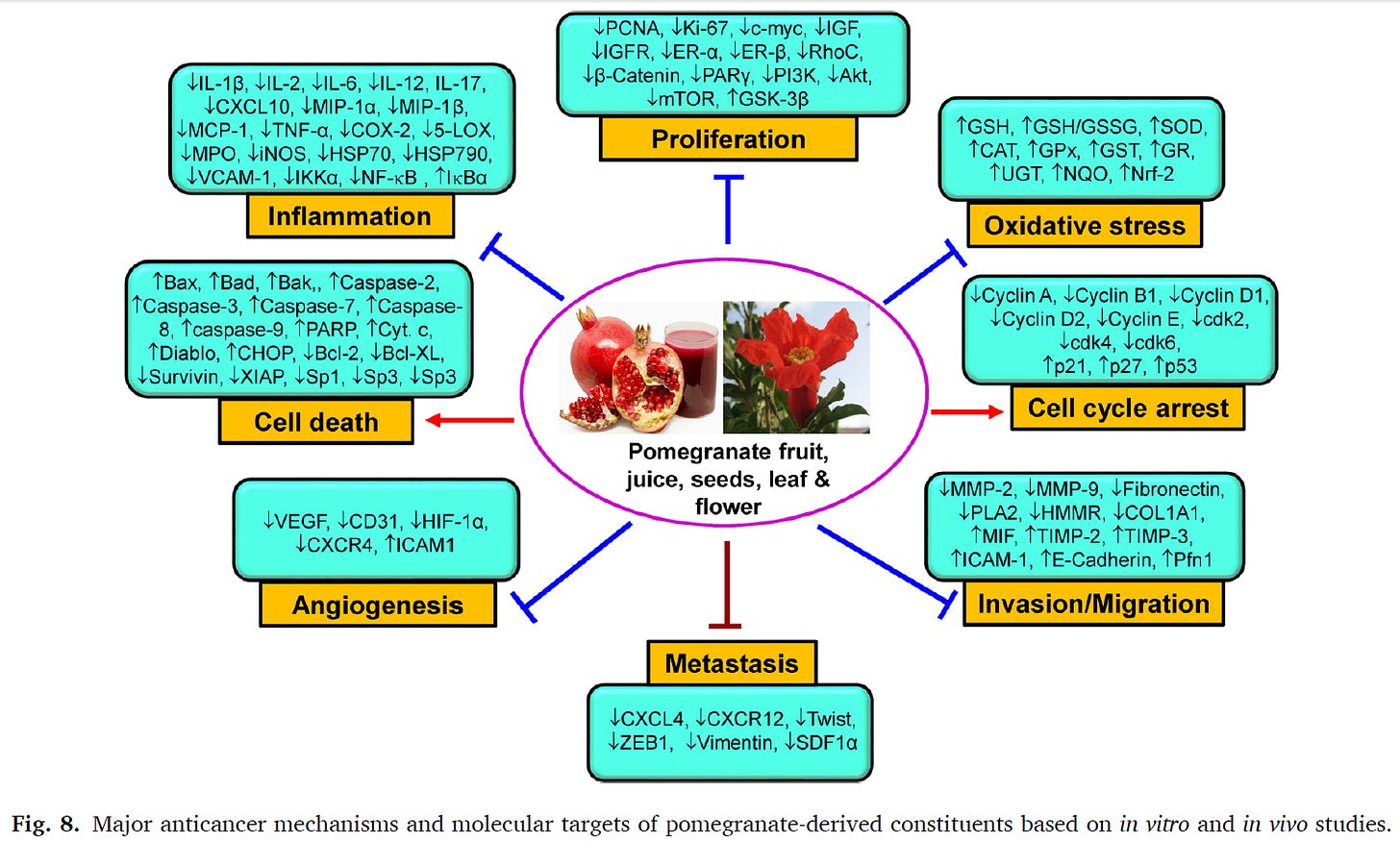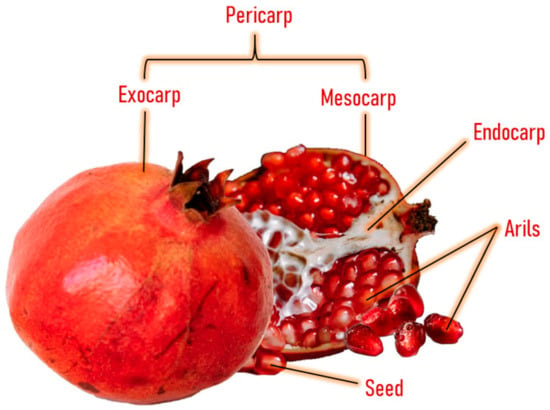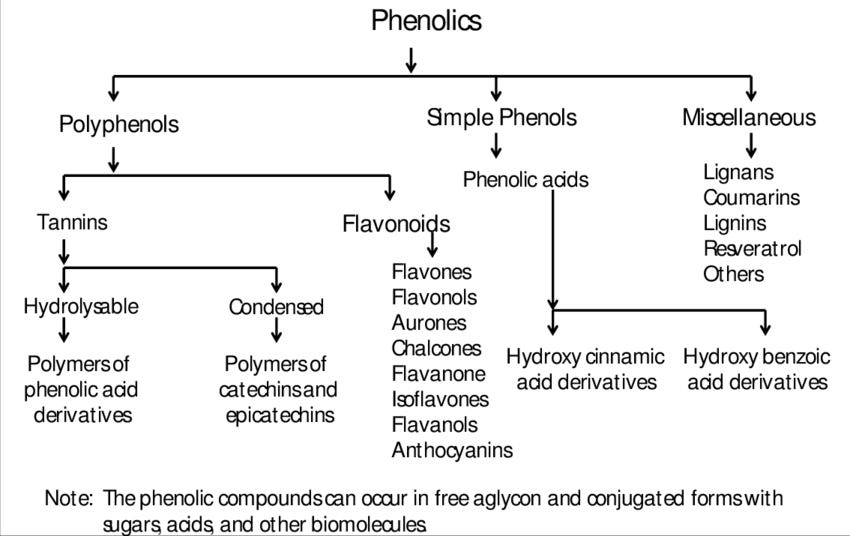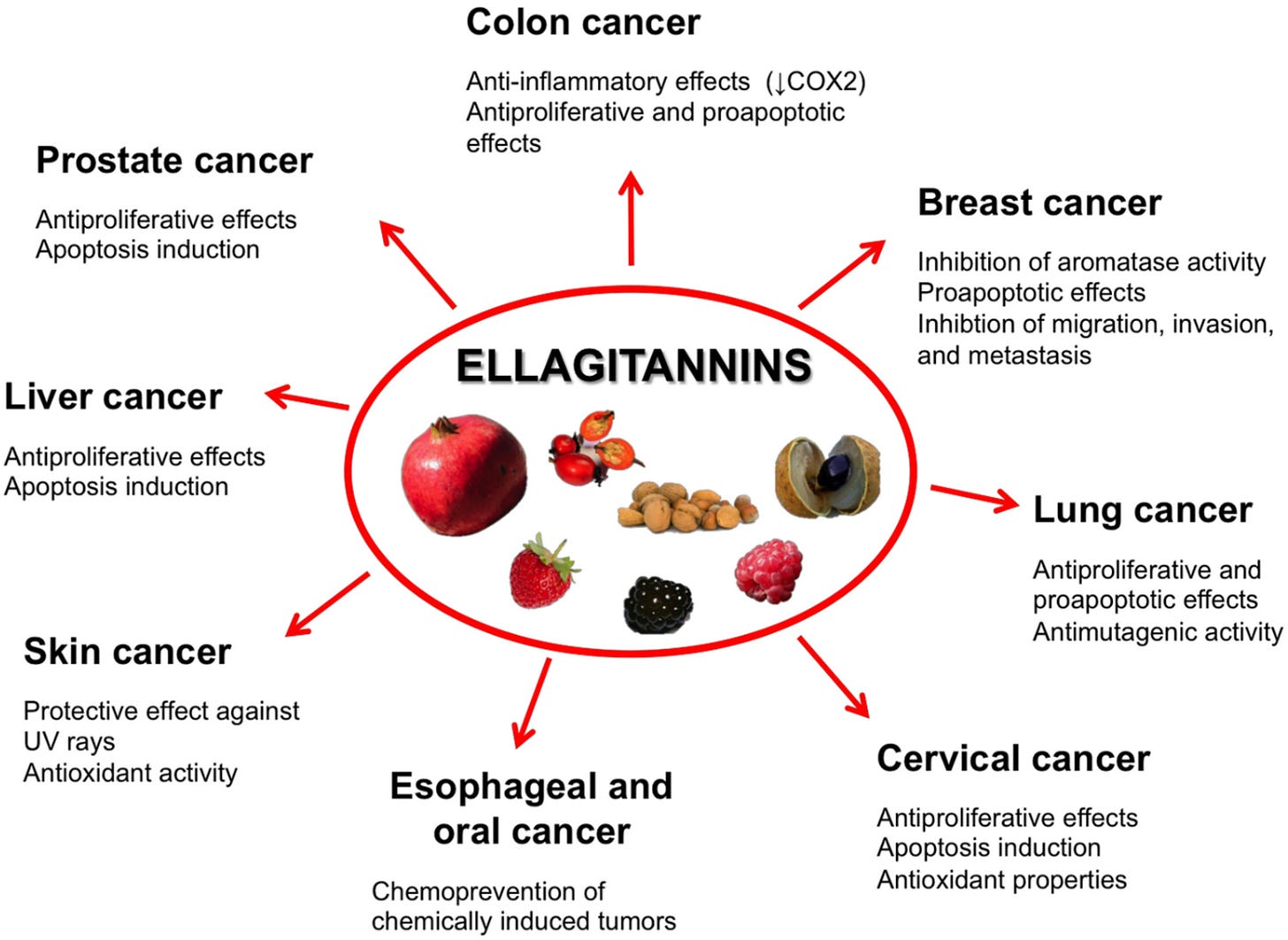by Dr. William Makis, Global Research:

Papers reviewed:
- 2021 Aug (Wong et al) – Pomegranate bioactive constituents target multiple oncogenic and oncosuppressive signaling for cancer prevention and intervention
- 2022 Feb (Cheshomi) – The effects of ellagic acid and other pomegranate (Punica granatum L.) derivatives on human gastric cancer AGS cells
- 2023 Jan (Teniente et al) – Anticancer Effect of Pomegranate Peel Polyphenols against Cervical Cancer
- 2023 Apr (Habchi et al) – Determination of the Antioxidant and Antiproliferative Properties of Pomegranate Peel Extract Obtained by Ultrasound on HCT-116 Colorectal Cancer Cell Line
- 2023 July (Rahman et al) – Pomegranate-specific natural compounds as onco-preventive and onco-therapeutic compounds: Comparison with conventional drugs acting on the same molecular mechanisms
TRUTH LIVES on at https://sgtreport.tv/
- Research on pomegranate (Punica granatum L.), a fruit of the Punicaceae family, has shown enormous potential for cancer prevention and intervention
- In addition to a rich source of polyphenols in its juice, including flavonoids and ellagitannins, pomegranate also houses hundreds of other phytochemicals in its pericarp, seed, flower, bark, flowers and leaves.
- Pomegranate (Punica granatum, L.), a fruit-bearing deciduous large shrub or small tree, is a native of the Himalayas in northern India to Iran
- Now cultivated globally, India and Iran are the leading pomegranate producing countries
- In the United States, the primary production sites are the drier regions of Arizona and California
- The shrub grows from 5 to 10 m in height
- Pomegranate fruit (classified as a large berry) ranges in color from light red to a green-yellow or purple. The fruit can be 5-20 cm in diameter, about 200-800 g in weight, grenade-shaped and crowned by the pointed calyx
- It contains approximately 200-1400 white, red or purple arils embedded into a spongy, white membrane enveloped by exocarp.
- pomegranate fruit contains three parts:
- seeds (3% fruit weight) containing about 20% oil,
- juice (30% fruit weight) and
- peels (pericarp) that include interior network of membranes

- pomegranate fruit used for medicinal purposes in ancient cultures for centuries
- pomegranate fruits are widely consumed in fresh and beverage formsas juice as well as jam, jelly and wine
- pomegranate leaves are brewed as tea and dried seeds are used as spice
- pomegranate features prominently in various major world religions, such as Buddhism, Christianity, Islam, Judaism, and Zoroastrianism
- It represents a symbol of life, longevity, health, femininity, fecundity, knowledge, morality, immortality and spirituality
- In the Ancient Greek myth of Persephone’s abduction, the pomegranate, known as the “fruit of the dead,” signifies life and rebirth
- applications of pomegranate are expansive and have notable uses in both Ayruvedic and the Unani systems of medicine.
- In Ayurveda (India), pomegranate is regarded as a “pharmacy unto itself”

- Peel (pericarp) – half of the fruit weight, has important compounds – phenolics, flavonoids, ellagitannins, proanthocyanidin
- phenolic acids (eg caffeic acid), ellagitannins
- flavonoids: kaempfero, Quercetin, catechin, EGCG
- arils (edible parts) – 85% water, 11% sugars, 1.4% pectin, organic acids, anthocyanins
- pomegranate juice – rich source of ellagic acid
- seeds – high concentration of lipids but lack polyphenols, have ellagic acid derivatives, triterpenoids, sterols
- leaves – contain ellagitannins, and various phytochemicals and flavone glycosides
- root – alkaloids
- bark – alkaloids, ellagitannins
- flowers – hydroxybenzoic acids, triterpenoids
Pomegranate and Cancer

Source: (2016 Ismail)
- Breast Cancer – extensively studied
- fermented juice polyphenols have superior antiproliferative effect to fresh juice polyphenols
- pomegranate fruit extract inhibits NF-κB activation
- pomegranate fruit juice inhibits metastasis (EMT, adhesion, migration)
- whole fruit extract induced Cancer Stem Cell differentiation and inhibited EMT and cancer cell migration, inhibited VEGF
- ellagitannins have anti-aromatase activity in ER-positive breast cancer
- pomegranate fruit extract enhances action of tamoxifen in sensitive and tamoxifen-resistant cells
- fruit peel extract, containing ellagitannins and free ellagic acid (most abundant phenolic acid) showed antioxidant and proapoptotic effects (inhibit proliferation via cell cycle arrest & apoptosis)
- pomegranate seeds (linolenic acids) decrease cell viability, inhibit VEGF
- in vivo (mice) – fermented juice polyphenols 50% inhibition of breast ca lesions and pomegranate seed oil caused 90% reduction of breast tumors
- pomegranate juice fed for 35 days reduced tumor size & volume (high apoptosis, inhibited VEGF, NF-κB, Akt, PI3k)
- Expression of micro RNAs (miRNA) significantly reduced
- Colon Cancer – pomegranate juice (ellagitannins) and total pomegranate tannin extract have cytotoxic effects on in vitro colon cancer cells (cell cycle arrest, inhibited VEGF, NF-κB, Akt, PI3k, increased miRNA-126).
- pomegranate peel polysaccharide – induced apoptosis of colon cancer cells
- pomegranate peel punicalagin (ellagitannin) & ellagic acid – induced apoptosis, cell cycle arrest
- pomegranate seed oil – in vivo – mice had reduced incidence of colon tumors
- pomegranate peel extract – in vivo – rats had higher antioxidants, prevented colon tumor formation
- pomegranate fruit extract – in vivo – rats had longer survival, lower tumor incidence and reduced carcinoembryonic antigen (CEA).
- Breast cancer, colon cancer, lung cancer, liver cancer, skin cancer, bladder cancer, prostate, ovarian
- Pomegranate: juice, peel extract, seed oil, emulsion
- Anti-cancer effects: reduced incidence, reduced tumor volume, size and weight
- Mechanisms: ↑Apoptosis, ↓proliferation, ↓NF-κB, ↓VEGF, ↓MMP
Human Clinical Trials
- There have been a dozen Human clinical trials
- Breast cancer – Phase I/II – pomegranate juice, drank it for 3 weeks – significant decline in estrone (promotes tumor growth) (mild effect)
- Colon cancer – Phase I/II – pomegranate extracts (ellagic acid, punicalagin, punicalin) (900mg/day for 15 days) – modulation of many micro RNAs (moderate effect)
- Prostate cancer – Phase II – pomegranate juice or extract (consumed daily up to 4 years) – significantly prolonged PSA doubling time, decreased PSA in 13% (mild effect)
- 2014 Thomas et al – used a polyphenol rich whole food supplement (pomegranate whole fruit powder, turmeric, broccoli, green tea extract) for 6 month – significant suppression of rising PSA levels.
- Conclusion: “Therapeutic potential of pomegranate in prostate cancer continues to be controversial”

- ellagic acid – detected in plasma at 1hr after eating, gone by 4hr (halflife 0.7hr)
- ellagitannins – none detected in plasma at 1hr after eating but…
- ellagitannins released ellagic acid in the jejunum, metabolized to urolithins which persist for long periods of time (may be responsible for therapeutic effects)
- “major pomegranate phytochemicals are absorbed from the gastrointestinaltract and become bioavailable”
- “main metabolic products of ellagitannins appear to be urolithins which are formed by gut microflora and the difference in gut microflora also explain the contrasting concentrations and the rate of formation in individuals”
- “metabolites of ellagitannins may be responsible for the long-term therapeutic effects of pomegranate, including its anticancer potential”



